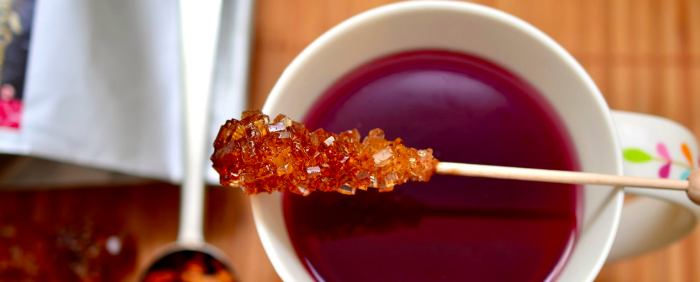
Sugar is systematically associated with cane, this plant widely cultivated in the tropical zones of our Globe. It is the world’s leading source of sugar production. But the sugar beet intends to exist on this market…
A plant from home
The sugar beet is characterized by a white flesh, as well as a conical and fleshy root. It is in the root that sugar is stored. This is formed through photosynthesis, at the level of the bouquet of leaves, which will be more or less dense depending on the variety. We distinguish between sugar beet and vegetable beet (this beautiful red plant in our gardens!) And fodder beet (for livestock feed).
Unlike cane, which likes heat and humidity, sugar beet prefers temperate climates. Originally grown in Italy, it has established itself very well in France. Today, Hexagon is the world’s leading producer of beet sugar! 380,000 hectares of sugar beet are grown there by 26,000 farmers. For the transformation of the plant, sweets-distilleries and refineries mesh the territory …
A plant that has made progress
Until the beginning of the 19th century, cane was the only major source of sugar. According to the FAO, it still accounts for 70 to 80% of the world’s sugar production. The reason for this success is simple: the sugar content of cane is much denser than that of beet. That’s why plant breeding research is working to improve the potential of sugar beet.
Researchers have thus allowed the twentieth century to increase by 50% the amount of sugar produced per hectare! Two axes were followed:
- The increase in beet yield per hectare.
- The improvement of the sugar content of the plant.
To impose yourself in front of the sugar cane
The end of the sugar quotas is announced for 2017 and, with it, the end of the guaranteed prices to beet growers. The competition with the cane will then be frontal … and maybe fatal! To continue to exist, beet has only one option: to offer a better yield of sugar.
In this context, the aim of the Aker program is to double the annual growth rate of sugar yield / hectare by 2020. The program is led by a consortium of eleven partners, public bodies and private breeding companies. The means implemented are up to the challenge: 80 researchers, 20 million euros budget.
The little story of beet sugar
In the sixteenth century, the agronomist Olivier de Serres discovers that the beetroot, coming from Italy, can produce a syrup of sugar. But it was not until 1786 that a German chemist, Achard, succeeded in extracting sugar from the beet and solidifying it.
In the nineteenth century, beet will be grown for its sugar … In 1806, the sea blockade related to the conflict between French and English, leads to a shortage of sugar. Soon after, Benjamin Delessert succeeded in refining beet sugar industrially. The Legion of Honor is attributed to him by Napoleon who calls him “Baron of Empire”. In the wake, the head of state ordered the planting of 100,000 hectares of beets. This was the starting point of a great adventure, agronomic, industrial and economic.
Beet, a great sugar factory
Men do not make sugar, they extract it. The sugar of plants is composed of sucrose. During the day, through photosynthesis, plants accumulate the energy they use at night to make sugar in the leaves. Then the plants make reserves of sugar that they store in the stem for the cane and in the root for the beet. Thanks to the breedersyields have increased: from 28 tons in 1939 to 45 tons of beets per hectare at present (with yields between 30 to 65 tons). In the same way, beets are more and more sugar. A ton of sugar beet supplies about 140 kilos of sugar, up from 115 kilos a century ago. If you do the math, that’s 7 tonnes of sugar per hectare. It’s impressive to see the beet’s ability to make sugar with sunshine!
Cane sugar
It is part of the history of civilizations. The Greeks already know the cane. The sugar that is extracted is then considered a medicine. In the seventh century, the Arabs introduced this culture into the Mediterranean countries. In the twelfth century, the Crusaders brought back sugar cane from Palestine and Syria. In the fourteenth and fifteenth centuries, it is Venice, then Portugal (Madeira) and the Balearic Islands that allow the development of sugar cane. Then the implantation of Europeans in the New World leads to a considerable expansion of sugar cane in Cuba, Puerto Rico, Jamaica, Mexico, Brazil, Peru, Chile, Venezuela, Ecuador, Colombia, Paraguay, Guadeloupe and Martinique.